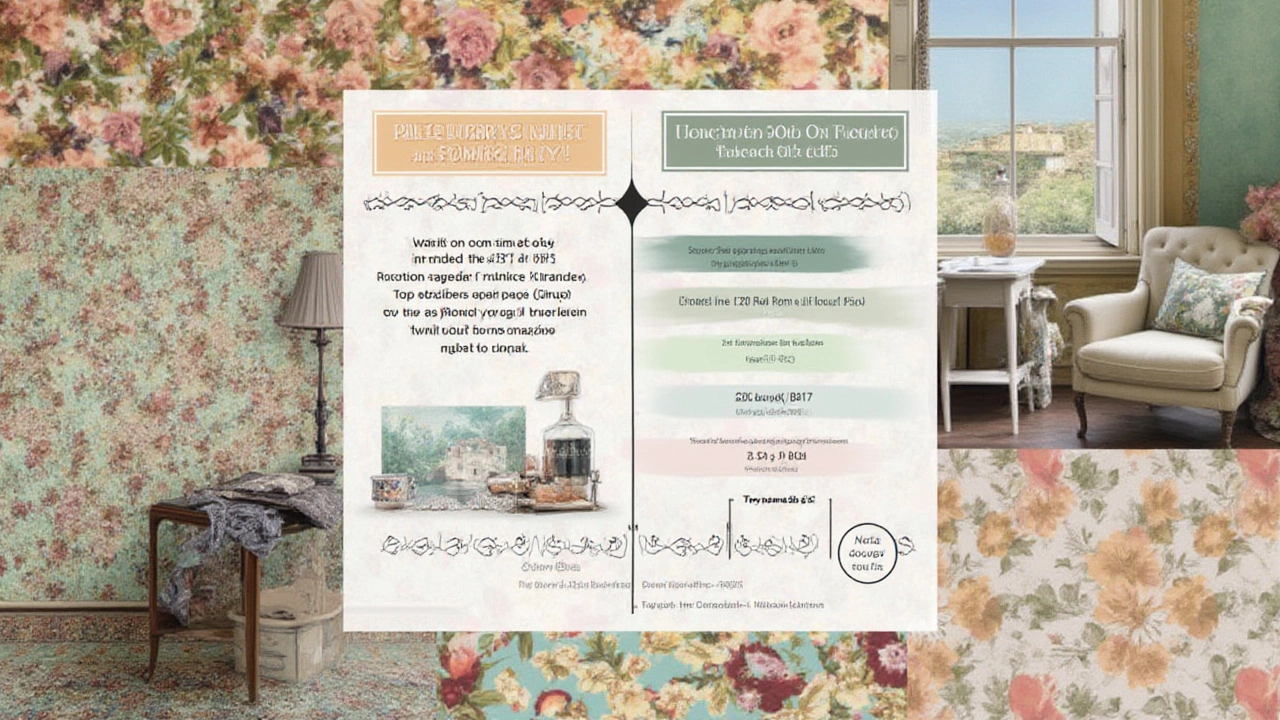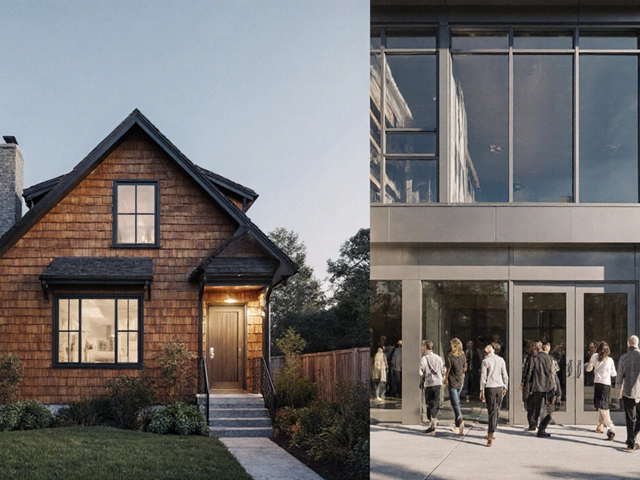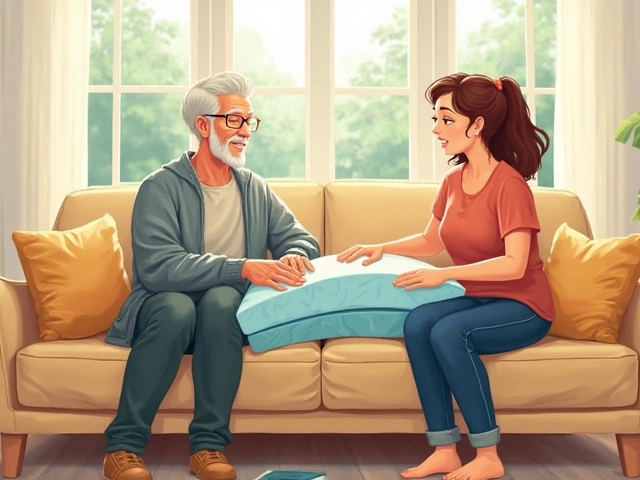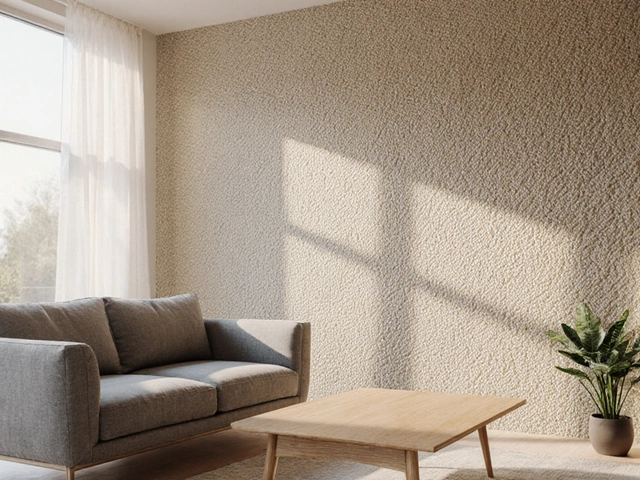
Step into a room that hasn’t changed since your grandparent’s wedding anniversary—the kind where wallpaper climbs the walls like ivy, curling slightly at the edges, with busy flowers or dizzying stripes. It’s almost impossible not to picture wallpaper when you think of old houses, but try finding it in a new flat or a swanky Auckland show home in 2025. Wallpaper, once a sign of class and creativity, has taken a back seat in home decor. But why? What's behind this shift, and does wallpaper deserve its bad rep? Buckle up—you might be surprised at what’s really peeled away wallpaper’s popularity.
The Peak and Plunge: Wallpaper’s Rise and Fall
Back in the 1960s and ‘70s, wallpaper reigned supreme in homes all around the world—not just in the UK or the US, but right here in New Zealand too. Kiwis loved the idea of turning bland plasterboard into a wild statement. That era brought bold patterns, floral floods, shiny metallics, and textures you could actually feel. If you visit caravans from that period, half the walls are still wrapped in those vintage motifs.
Wallpaper was more than design. It was practical, masking imperfections and adding insulation. A study done in the late 1970s by the New Zealand Institute of Architects showed wallpaper saved homeowners up to 5% a year on winter heating—a small number, but in drafty pre-double-glazed homes, every bit helped.
Then, almost overnight, wallpaper started looking dated. Neutral paint trends swept in during the 1990s: people wanted fresh, minimalist spaces, not busy damask prints staring at them over breakfast. Open-plan living didn’t help either. Once you knock down walls, how do you match patterns across odd angles and massive spaces?
The DIY boom didn’t do wallpaper any favours. While paint is forgiving—messy edges, touch-ups, no biggie—wallpapering turned into a nightmare for the average home renovator. Get one strip misaligned or trap a bubble underneath, and suddenly you’re regretting everything. Surveys from Mitre 10 in Auckland, way back in 2009, found that 67% of first-time wallpaper hangers vowed never to do it again. People didn’t want to spend time scraping glue off their fingers or picking dried paste from the mango wood skirting.
Another factor? The glue. Many popular pastes, especially before 2005, contained strong chemicals that filled homes with harsh odours and left behind residues. Parents and pet owners started choosing low-VOC or VOC-free paints instead. Paint manufacturers were quick to market themselves as ‘safer,’ ‘healthier,’ and ‘eco-friendly’—buzzwords that perfectly matched the rising tide of environmental concern.
Let’s not ignore the cost. Good wallpaper isn’t cheap (think $150-$300 per roll, and you’ll still need several rolls for a single room). Add in installation—if you want it to look professional—and it’s another chunk out of your renovation fund. Compare that with a $90 can of top-quality paint that covers the same area, and it’s a no-brainer for homeowners doing up investment properties or prepping a house to sell.
And here’s an interesting insight: a 2017 survey by Australian interior design magazine 'Inside Out' reported that 82% of real estate agents recommend painting over wallpaper when preparing a home for sale. Apparently, potential buyers associated wallpapered rooms with "work to be done" and had a harder time picturing their own furniture fitting in.
The world also just sped up. Tastes move quickly. If you’re tired of your colour scheme, two coats of paint will fix things up in a weekend. Stripping wallpaper, by contrast, is right up there with moving house on the list of things people dread—especially if the sticky mess gets onto newly laid carpet or timber floors.
Today, you’ll rarely spot wallpaper outside of heritage homes, boutique hotels, or the occasional nostalgic café. But what killed wallpaper’s popularity isn’t just fashion. It’s the combine of hassle, health, cost, and lifestyle shifts—a perfect storm that knocked wallpaper off its throne.

Alternatives That Took Over Walls (And Why People Chose Them)
So what’s filling the void that wallpaper left behind? Paint is the obvious answer, but there’s more to it than that. People love paint for how easy it is: minimal prep, dries quickly, and you can repaint when you feel like it. In fact, Resene (the iconic Kiwi paint company) reports that local homeowners paint their homes on average every five years—that’s twice as often as people re-wallpapered back when that was the normal thing.
But paint’s only the beginning. Feature walls, made popular in the mid-2000s, let Aucklanders have a splash of drama without going full Alice-in-Wonderland. You’d see bold navy or rich forest green walls in living rooms, or maybe a black wall in the master bedroom. People were after impact, but on their terms, and without the fuss or cost of wallpaper.
Texture paints and specialty finishes, like Venetian plaster, started popping up in show homes. These options give you the depth and dimension of wallpaper, but they’re simpler to apply and much easier to change out if you get tired of the look.
Yet it’s not just paint. The rise of other wall coverings is a testament to the “quick fix” culture. Peel-and-stick vinyl decals swept the market in the 2010s. Perfect for renters unsure how long they’ll stay put, these let you personalise a space while promising easy, residue-free removal. And with companies offering everything from vintage botanicals to sports team motifs, everyone could find their flavor.
If you walk through any recent open home in Mount Eden or Sandringham, you’ll notice different materials altogether. Timber wall panelling, acoustic felt tiles, cork boards—each doing jobs that wallpaper once handled, but with new spins. Timber panelling, for instance, brings in warmth and works wonders for houses with poor insulation—a perk much like wallpaper’s old days, but without fussing around with paste or patterns. Cork walls in a home office double as memo boards. Acoustic felt improves the echo in high-ceiling homes. These materials are practical, washable, and often made from recycled content, ticking the sustainability box.
Technology also muscled in with digital murals printed to size for a single wall. You can order a wallpaper mural of your dog surfing at Piha Beach if you feel like it—no one back in 1975 could imagine that. But even then, the demand is mostly commercial: restaurants, dental offices, boutique hotels. Most New Zealanders keep it simple at home, partly because these murals are pricey and often have a short trend cycle.
To help you wave goodbye to peeling wallpaper, here are a few solid wall update tips:
- If you’re itching for pattern, test it with removable decals or a mural first before committing to a big change.
- For renters, stick to easy-off options: decals, washi tape, or even decorative curtains hung on tension rods to add texture without damage.
- Mix textures—think about combining a painted wall with timber slats or a cork board for interest and practicality.
- Keep eco-friendly choices in mind. Low-VOC paints, recycled acoustic panels, and sustainably sourced timber panelling all play nice with your conscience and future resale value.
And some numbers for those who love a data-driven decision:
| Wall Covering Type | Average Lifespan | Ease of Removal | Cost (per room, NZD) |
|---|---|---|---|
| Wallpaper | 10-15 years | Difficult | $600 - $1,600 |
| Paint | 5-7 years | Easy | $300 - $800 |
| Peel & Stick Decals | 2-5 years | Very Easy | $80 - $300 |
| Cork/Timber Panels | 10-20 years | Moderate | $500 - $1,200 |

Is Wallpaper Gone Forever? The Unexpected Comeback
Here’s where things get weird. Just when you’d think wallpaper is as relevant as Betamax or pager beepers, it’s sneaking back in through the side door. Pop into design expos in Auckland or Melbourne and wallpaper’s lurking, but it looks nothing like the rolls drying in your Nana’s spare bedroom.
Wallpaper today is a niche luxury, like handmade tiles or artisan lighting. Designers reach for it to create drama in places where people spend little time—think powder rooms, hallways, or a statement chimney breast. Instead of garden roses and paisleys, today’s patterns are influenced by graphic design, pop culture, and even Māori art. Luxe options feature metallic foils, wood fibers, or even 3D elements you can run your hand over. New Zealand design magazines like 'Homestyle' have featured more wallpapered spaces in the past year than they did during the last decade, but almost always in unexpected spots, never as a whole-room solution.
Technology means even traditionally tricky wallpapers are easier to live with now. Peelable backing, water-based pastes, and digital printing make mistakes less costly. Sustainability is stitched into high-end lines, so you can now snag wallpaper printed with non-toxic inks on recycled paper.
For renters, manufacturers are jumping into the market with ultra-removable, reusable wallpapers. These have exploded in the US and are starting to pop up in Mitre 10 stores across New Zealand as short-term commitment wall makeovers become trendy again.
The designers who still swear by wallpaper argue that it brings soul to bland rooms—something paint alone can rarely do. It’s intensely personal and memorable. When done right, a statement wallpaper can get people talking (or arguing, depending on your choice!). Still, most homeowners err on the side of caution, dipping in with an accent wall or alcove, rather than wrapping a whole room.
Thinking about giving wallpaper a second chance? Here are a few tips if you dare:
- Start small. Powder rooms, wardrobes, or inside bookcases are safe testing grounds.
- Hire a pro if you want a seamless, fuss-free installation—especially with tricky textures or patterns. Good professionals are worth their weight in gold.
- Don’t scrimp on prep. Wall surfaces must be clean, dry, and smooth for best results. Invest in a quality primer if your walls have ever seen glossy paint or damp.
- If you’re considering resale, go for classic prints or keep the trendier wallpapers to removable options.
So the next time you pass a home with wild, busy stripes peeking out from behind faded curtains, remember: what killed wallpaper wasn’t just taste. It was the sum of changing habits, the chase for simplicity, rising costs, and a few traumatic Saturday projects gone wrong. But don’t count wallpaper out for good—like lava lamps or quirky vintage armchairs, it’s ready to surprise us just when we think it’s disappeared for good.




